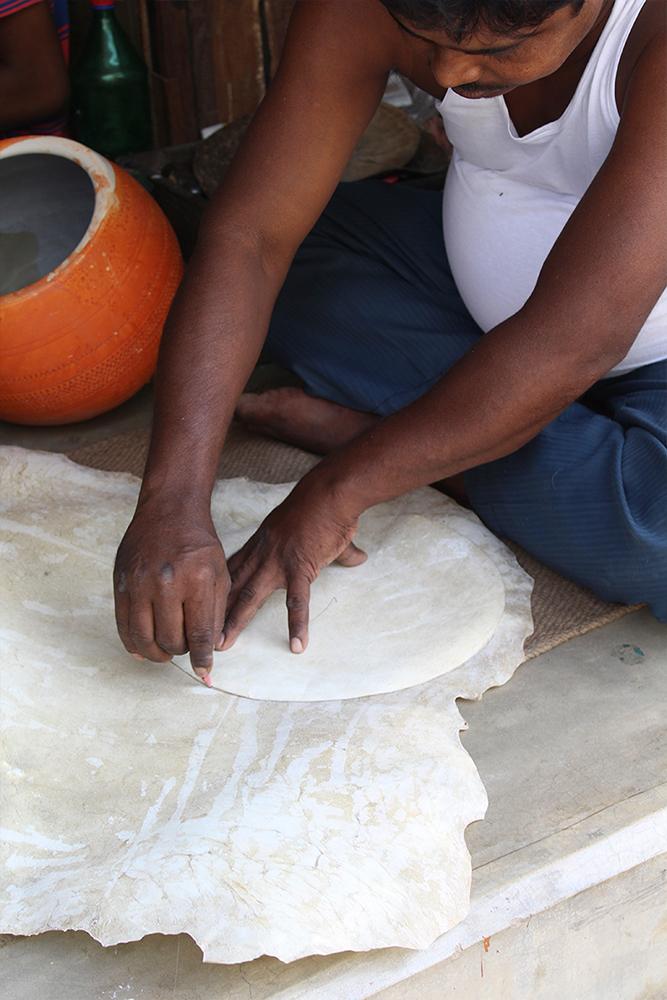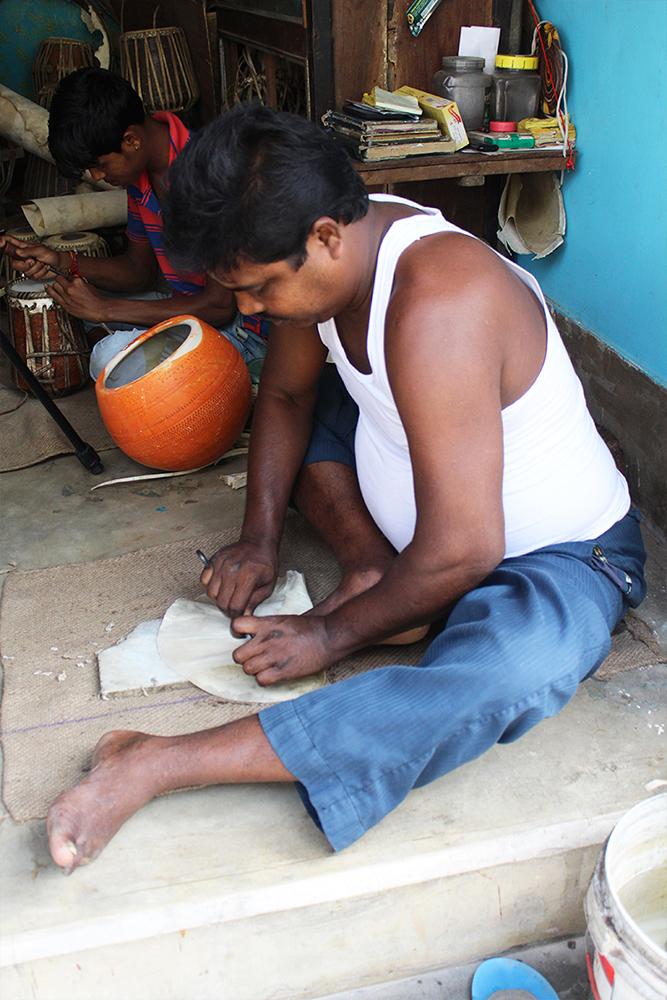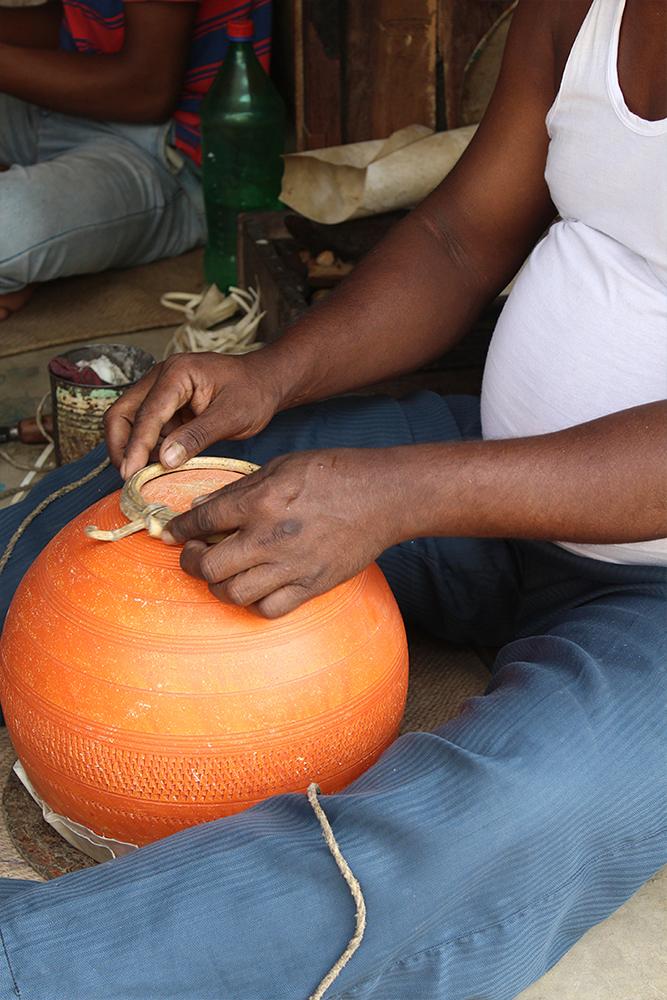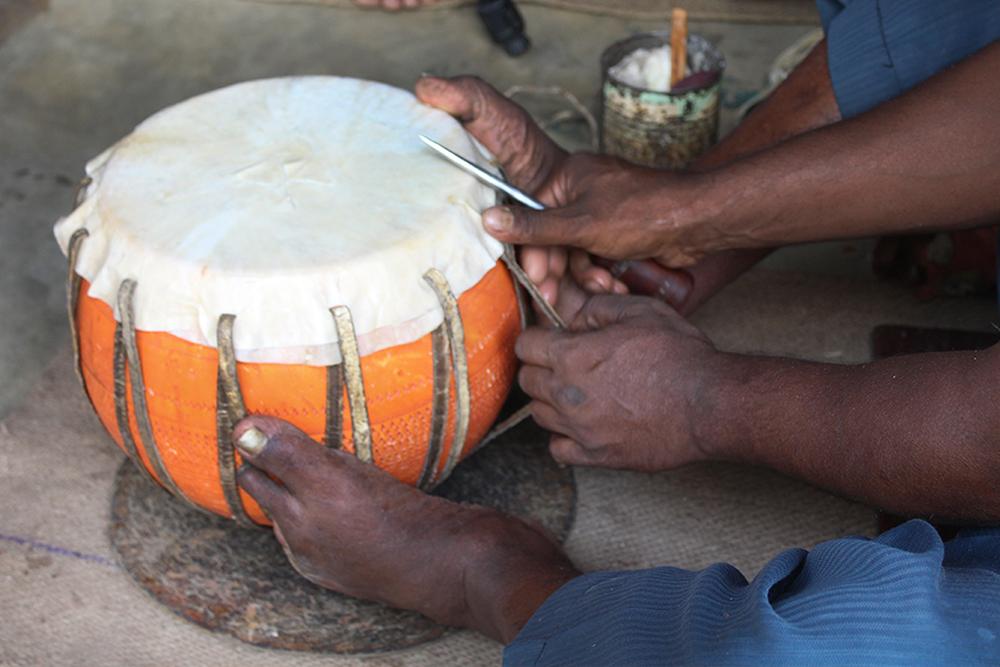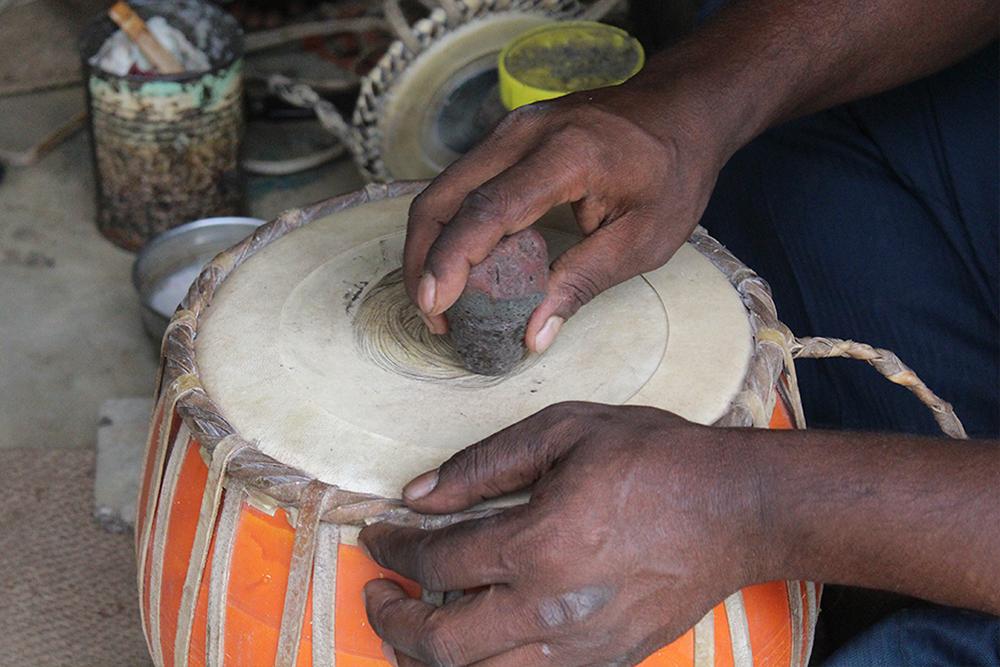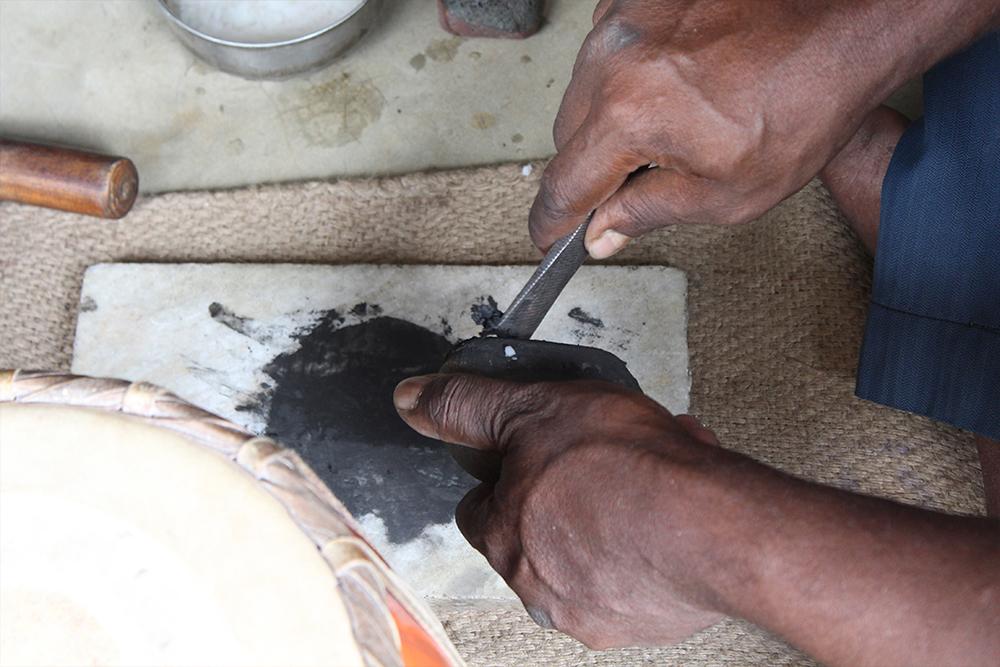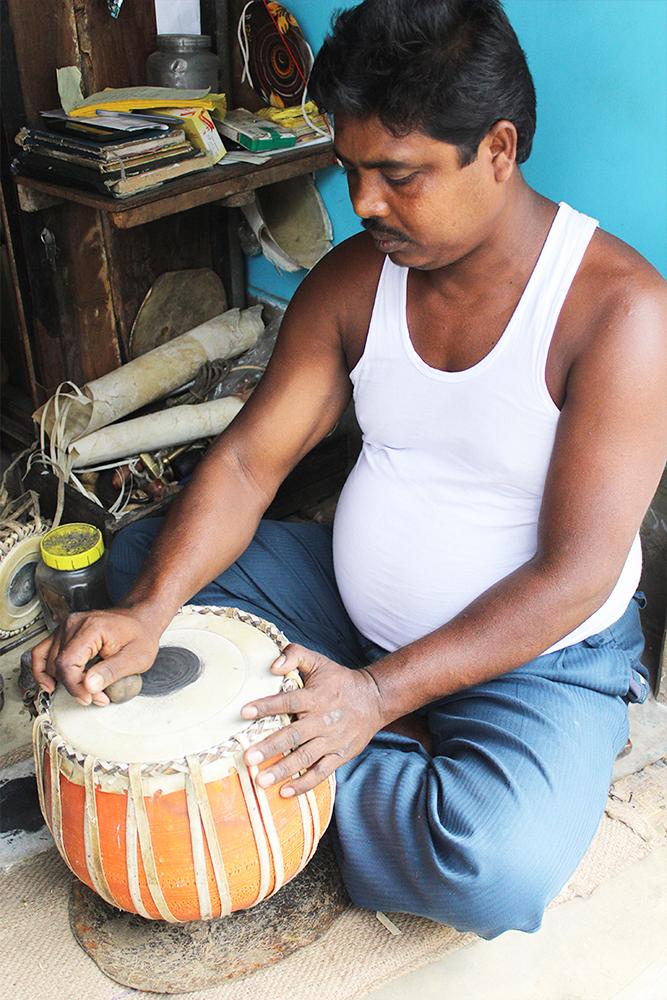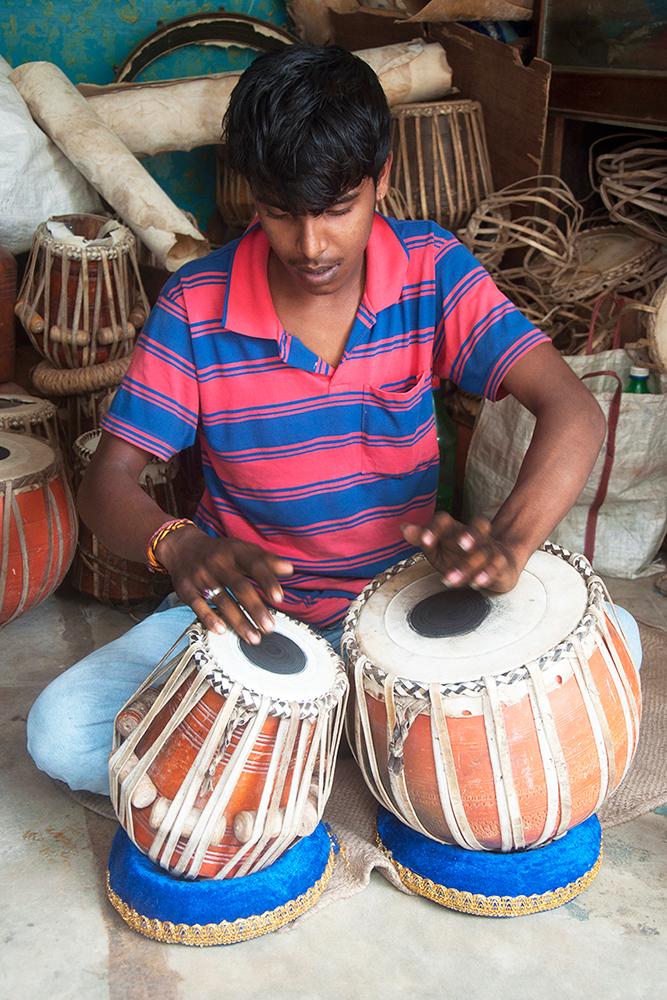Design Gallery
Terracotta Dagga - Agartala, Tripura
Tabla Making
by
The Tabla is an instrument consisting of a pair of drums used in traditional, classical, and popular folk music. The smaller drum, played with the dominant hand, is sometimes called Dayan (literally "right"), dāhina, but is correctly called the "Tabla." The small table is made from a conical piece of mostly teak and rosewood hollowed out to approximately half its total depth. The larger drum, played with the other hand, is called Bayan (literally "left") or sometimes Dagga, Duggi, or Dhama. The Dagga may be made from different kinds of materials. Terracotta Dagga, a Tabla, is made in Agartala, the capital city of Tripura. By using terracotta as a base, Dagga is being made to get a good base and clear pitch in the hall of musicians. Music has influenced our life from the ancient days, and tradition still follows them. The musical instruments are always used to support music.
For more details:
http://www.dsource.in/resource/terracotta-dagga-agartala-tripura












